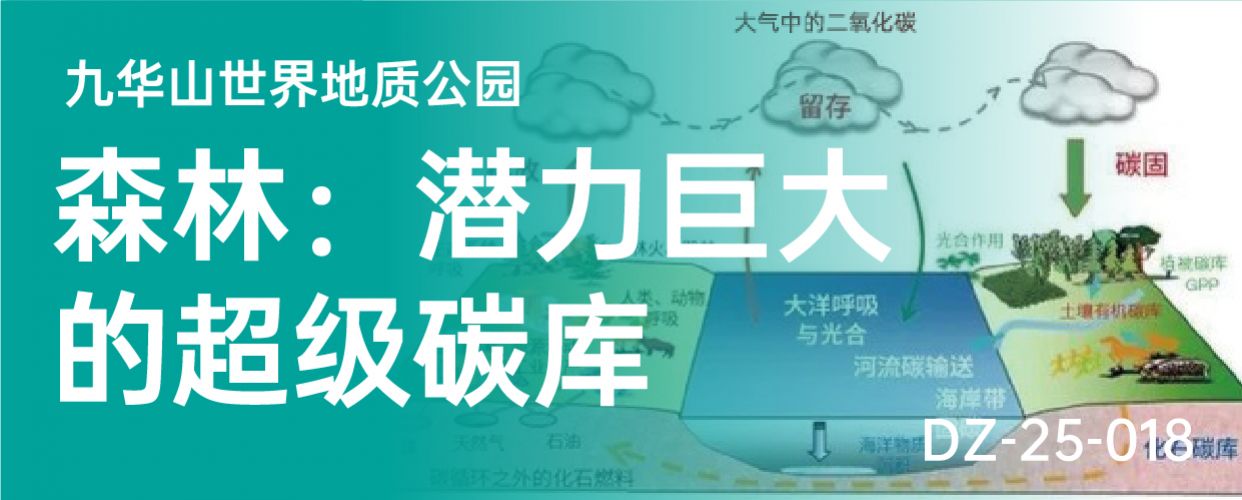
景点的名称:森林:潜力巨大的超级碳库Forests: A Super Carbon Pool with Huge Potential 삼림: 잠재력이 큰 슈퍼 탄소 저장소
森林:潜力巨大的超级碳库Forests: A Super Carbon Pool with Huge Potential
삼림: 잠재력이 큰 슈퍼 탄소 저장소
森林具有固定二氧化碳、净化空气、涵养水源、水土保持、防风固沙、维持生物多样性等诸多功能。其中,固碳功能也称“碳汇”功能,在全球气候变化和“碳中和”背景下具有十分重要的意义。
森林碳汇的大小是生态系统碳循环作用的结果。生态系统碳循环是生态系统与外界进行以二氧化碳为主的碳交换过程,具体而言,植物通过光合作用将大气中的二氧化碳固定为有机物质,其中一部分的碳元素通过植物呼吸作用转化为二氧化碳释放至大气,一部分以植被生物量的形式储存起来,一部分则通过凋落物、根系分泌物等进入土壤。进入土壤的碳元素大多会经过微生物的分解作用,再次以二氧化碳的形式回到大气中,从而使碳元素完成从大气进入植被,部分再进入地表和土壤,然后又部分地回到大气的循环过程。
Forests have many functions such as CO2 sequestration, air purification, soil and water conservation, wind and sand control and biodiversity maintenance. Among these functions, carbon sequestration, also known as “carbon sink”, is of great importance in the context of global climate change and “carbon neutrality”.
The size of forest carbon sinks is the result of the carbon cycle action of the ecosystem. Specifically, plants fix atmospheric CO2 into organic matter through photosynthesis, and part of the carbon is stored in the form of vegetation biomass, while another part enters the soil through plant respiration, or through litter or root secretions, and then returns to the atmosphere again in the form of CO2 through microbial decomposition.
삼림은 이산화탄소 고정, 공기정화, 수원함양, 수토유지, 바람을 막고 모래를 고정시킴, 생물 다양성 유지 등 많은 기능을 가지고 있다. 그 중 고탄소 기능은 ‘탄소 흡수’ 기능이라고도 하며, 전 세계 기후 변화와 ‘탄소 중립’의 맥락에서 매우 중요한 의미를 가진다.
삼림탄소흡수원의 크기는 생태계의 탄소순환작용의 결과이다. 생태계의 탄소순환은 생태계가 외부와 이산화탄소를 위주로 하는 탄소교환과정이다. 구체적으로 말하면 식물은 광합성을 통해 대기중의 이산화탄소를 유기물질로 고정시킨다. 그중 일부분의 탄소원소는 식물호흡작용을 통해 이산화탄소로 전환되여 대기로 방출되고 일부분은 식물생물량의 형식으로 저장되며 일부분은 조락물, 근계분비물 등을 통해 토양에 들어간다. 토양에 들어간 탄소원소는 대부분 미생물의 분해작용을 거쳐 다시 이산화탄소의 형식으로 대기중으로 돌아오게 되여 탄소원소가 대기에서 식생으로 들어가고 부분적으로 다시 지표와 토양에 들어간후 또 부분적으로 대기로 돌아가는 순환과정을 완성하게 된다.